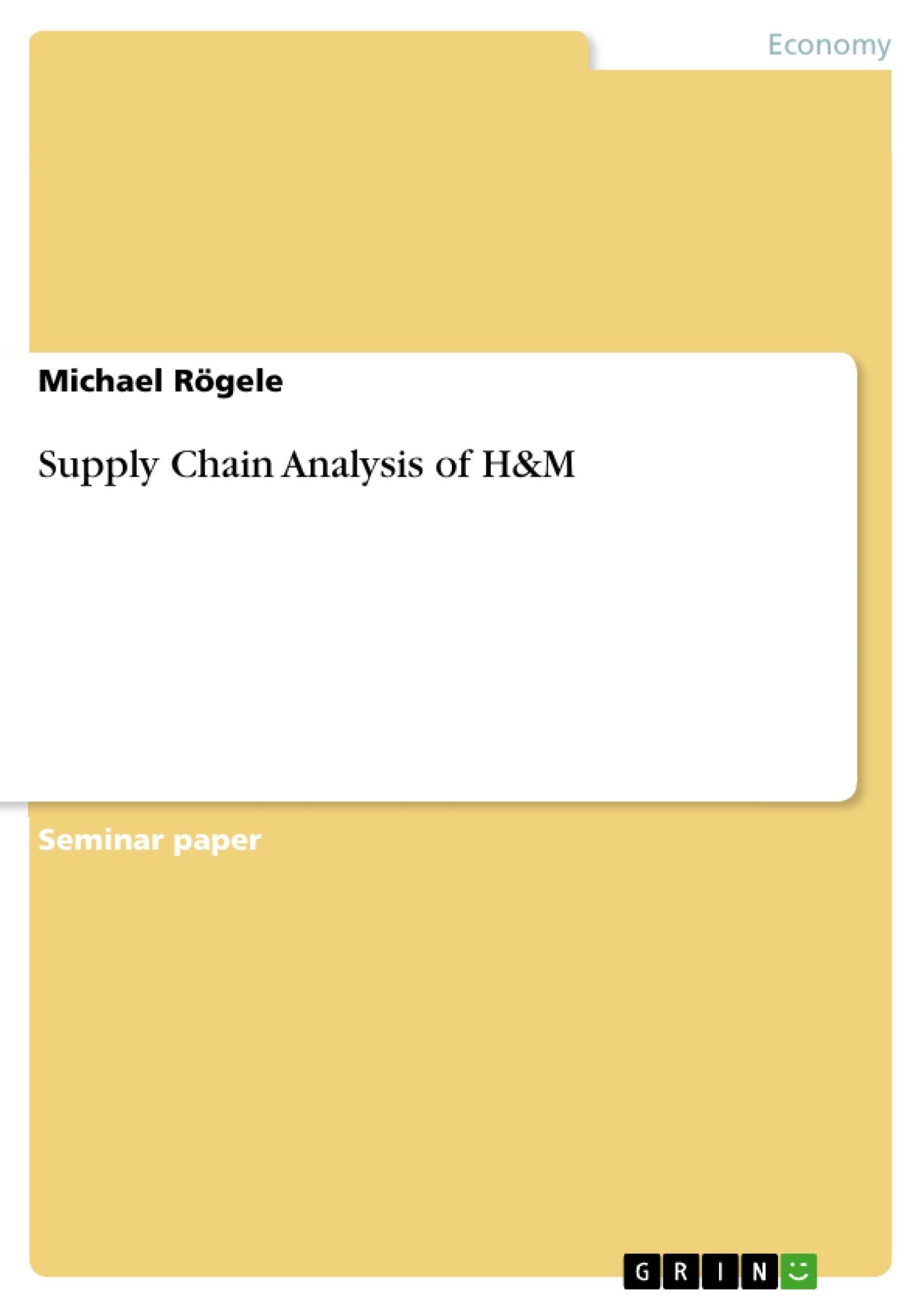This work provides an insight into the supply chain of H&M. After a brief company introduction the whole structure of H&M´s Supply Chain is analyzed in detail. Starting from Bills of Material (BOM) and Bills of Routing (BOR) a Business Scope Diagram is created. This is followed by a detailed Geographic Map where the flows of goods and flows of information are displayed and explained. For better readability in this part an example for the situation in Europe is leveraged. Going further, a comprehensive thread diagram is the result. In this step we can identify problems in the current Supply Chain. Two well-known instruments, namely Balance Score Card (BSC) and Current Reality Tree (CRT) are used for the analysis of the problems. With help of the Future Reality Tree (FRT) we can give recommendations for the future and how current problems of the Supply Chain can be solved.
Table of Contents
- Introduction
- Company Introduction
- SWOT Analysis
- Structure of Supply Chain
- BOM - Bill of Materials
- BOR-Bill of Routing
- Customer and Supplier Table
- Business Scope Diagram
- Geographic Map
- Thread Diagram
- Problem Definition
- Supply Chain Analysis
- KPI Decomposition Table
- Aligning Metrics with Balanced SCORcard (BSC)
- SCORcard with Gap Analysis
- Metrics Decomposition
- Current Reality Tree with Causal Analysis
- Improvement and Conclusions
- Future Reality Tree with Causal Analysis
- Further Improvement Actions
Objectives and Key Themes
This assignment aims to provide a comprehensive analysis of the H&M supply chain, exploring its structure, key performance indicators (KPIs), and areas for improvement. The analysis utilizes a variety of tools and frameworks, such as the Bill of Materials (BOM), Bill of Routing (BOR), Balanced Scorecard (BSC), and Current Reality Tree. The aim is to identify strengths, weaknesses, opportunities, and threats within the supply chain and to propose actionable steps for optimization.
- Supply Chain Structure and Components
- Key Performance Indicators (KPIs) and their Decomposition
- Gap Analysis and Improvement Opportunities
- Application of Management Tools and Frameworks
- Future Reality Tree and Improvement Actions
Chapter Summaries
The first chapter introduces H&M as a global fashion brand, providing a brief company overview and a SWOT analysis. It highlights H&M's strengths, such as global brand awareness and affordable prices, as well as weaknesses, including concerns about product quality and manufacturing control. The second chapter delves into the structure of H&M's supply chain. It elaborates on the Bill of Materials (BOM) for apparel products, illustrating the various components and levels involved in the production process. The Bill of Routing (BOR) showcases the supply chain cycle from cotton farming to final delivery, emphasizing the steps involved in manufacturing, packaging, and distribution. The chapter also presents a geographic map highlighting the global reach of H&M's operations.
The third chapter delves into a detailed supply chain analysis, focusing on KPIs and their decomposition. It explores how KPIs align with the Balanced Scorecard (BSC) framework, identifying potential gaps and areas for improvement. This chapter also presents a current reality tree with causal analysis, revealing the root causes of existing problems and challenges within the supply chain.
The fourth chapter proposes future improvement actions, building upon the insights gained from the previous analyses. It presents a future reality tree with causal analysis, outlining potential solutions and their impact on the overall supply chain. This chapter concludes with a discussion of further improvement actions and potential strategies for enhancing efficiency and sustainability.
Keywords
The key terms and concepts explored in this analysis include supply chain management, fashion retail, SWOT analysis, Bill of Materials (BOM), Bill of Routing (BOR), Balanced Scorecard (BSC), KPI decomposition, gap analysis, current reality tree, future reality tree, improvement actions, and global operations.
- Citation du texte
- Michael Rögele (Auteur), 2019, Supply Chain Analysis of H&M, Munich, GRIN Verlag, https://www.grin.com/document/497203




